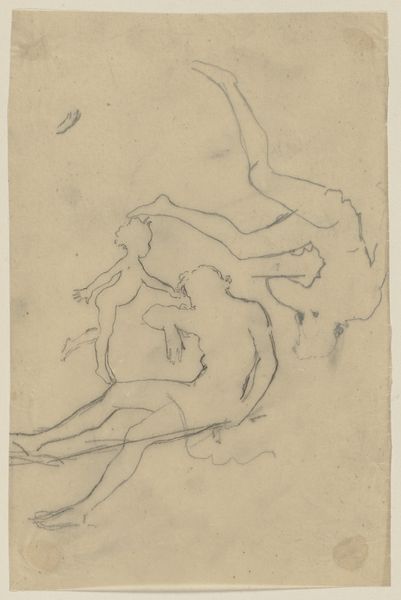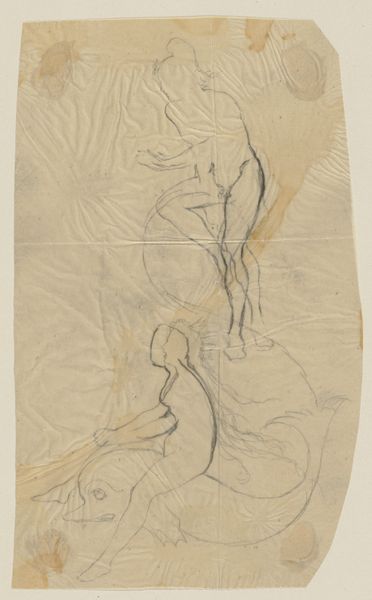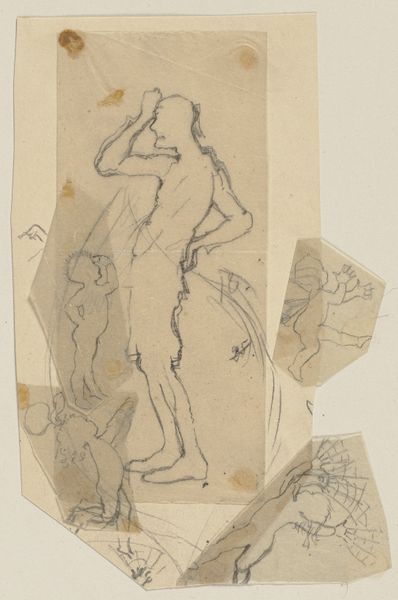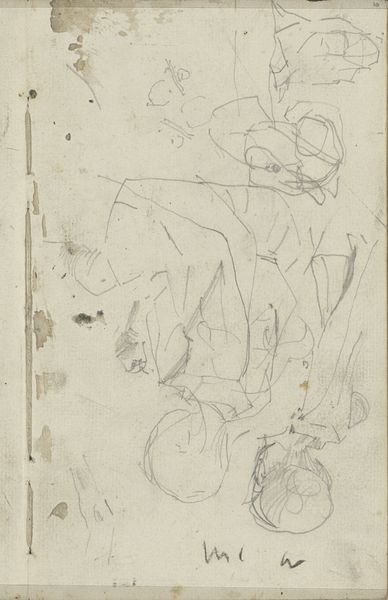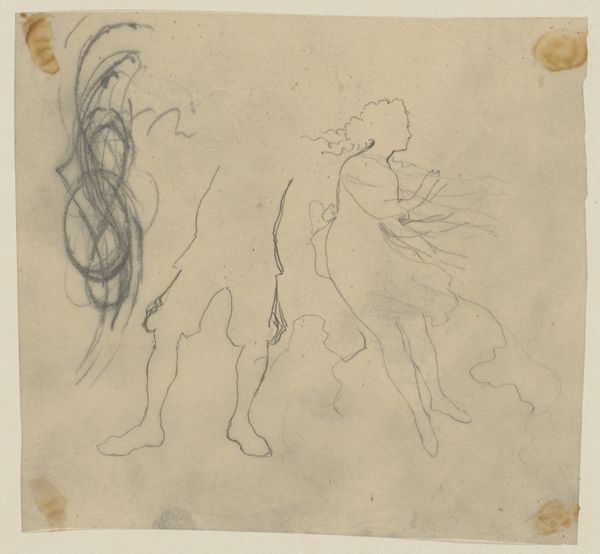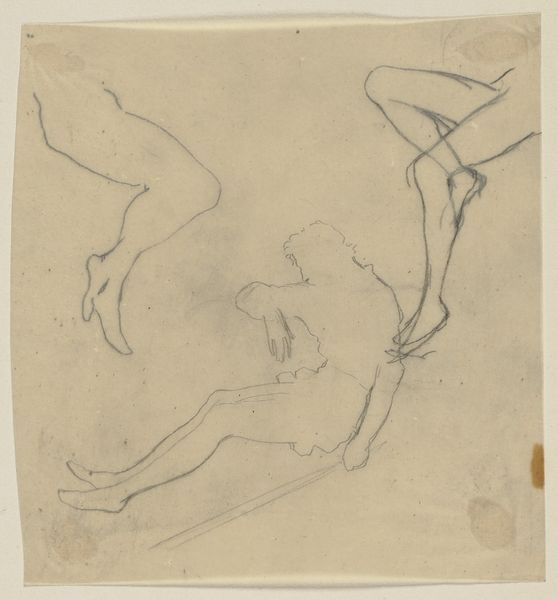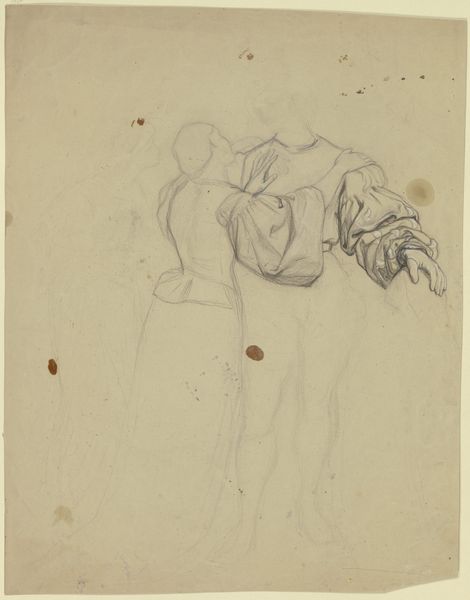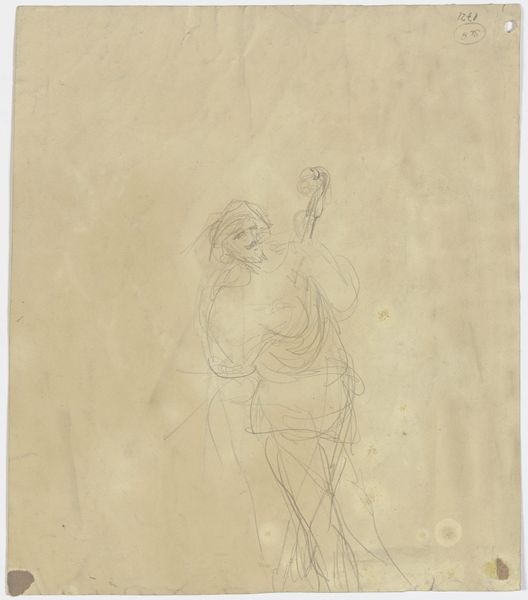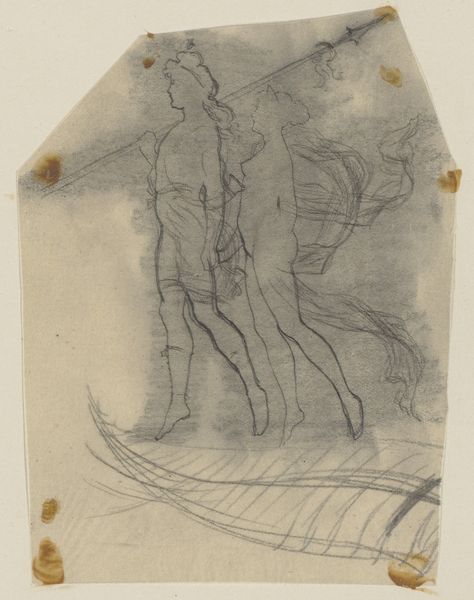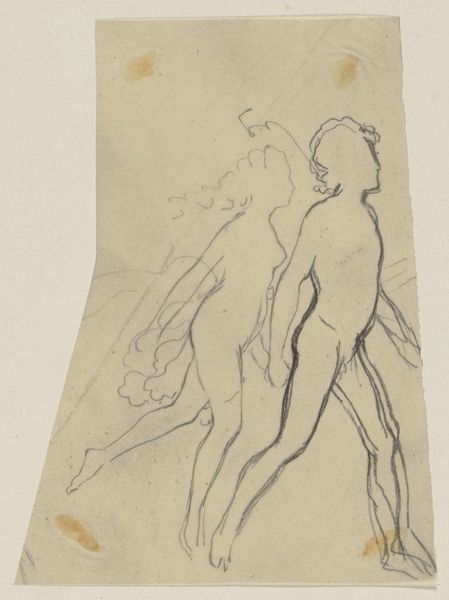
Titania, unbekleidet und schwebend, die Arme nach vorn gestreckt, und Nick Bottom mit Eselskopf, gehend, die Arme nach vorn gestreckt, zwischen ihnen eine Distelranke c. 1867 - 1868
0:00
0:00
Copyright: Public Domain
Curator: This is Paul Konewka’s drawing, created around 1867-1868, titled "Titania, unbekleidet und schwebend, die Arme nach vorn gestreckt, und Nick Bottom mit Eselskopf, gehend, die Arme nach vorn gestreckt, zwischen ihnen eine Distelranke". It’s rendered in pencil and ink. Editor: My first impression is one of delicate strangeness, a gossamer vision. The hazy rendering adds to the otherworldly feel, particularly the figure of Titania herself. Curator: Indeed. It seems Konewka employed rather soft pencils here, achieving such ethereal effects. You can see traces of smudging as well; most visible in the tonal gradients. Editor: The donkey-headed figure immediately identifies the narrative from Shakespeare’s A Midsummer Night’s Dream, doesn't it? This melding of the beautiful and the grotesque has a distinctly Romantic sensibility to it. The thistle vine almost seems to mock Bottom, doesn't it? Its twining, prickly nature hints at the thorns in the path of love. Curator: Perhaps. Note also the material conditions of artmaking in this period: German Romanticism leaned heavily on accessible materials. The widespread availability of pencils – think of industrialisation processes – supported preliminary studies that themselves became prized art objects, often exhibited as finished pieces. This challenges older hierarchies valuing finished oil paintings more. Editor: That is a telling point about value... And beyond material conditions, what is intriguing, in this work, is Titania’s apparent lack of agency. Is she reaching out of compassion for the magically transformed Bottom, or is there something more tragic or desperate in her pose? It could reference the more dangerous side of fairy encounters, of a royal enchantment that holds no empathy. Curator: That may be too dark. Konewka's use of readily available materials does show how artists broadened their practices during the Romantic era, using humbler materials like pencil to explore themes of dream and myth in new ways. His production mirrored what happened in broader culture where "cheap" reproductive media were available to wider audience. Editor: I appreciate how looking closely can lead us to contemplate so much more. Curator: Likewise, seeing an artwork within a broader cultural materialist perspective, as a form of production, I found myself thinking about shifting values between what used to be "high art" and what's now considered more valued artwork like pencil sketches and their relation to reproductive printing.
Comments
No comments
Be the first to comment and join the conversation on the ultimate creative platform.
